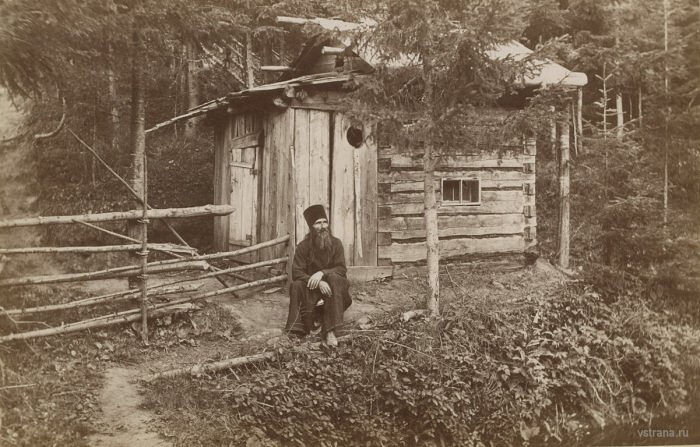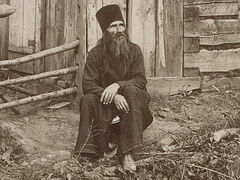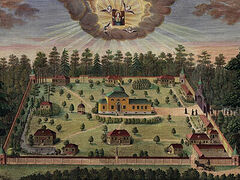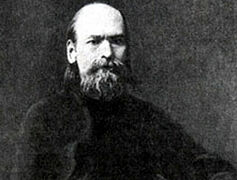St. Stephan of Fileika (Simeon Kurteev in the world) was born on July 17, 1830, in a peasant family in the village of Molchanovsk, Scherbinino District, Vyatka Governorate, near the city of Vyatka (Severnie Vorota District, city of Kirov). In Baptism, he was named Simeon in honor of the Palestinian saint, Venerable Simeon of Emessa, Fool for Christ (July 21/August 3).
His mother had to raise him alone because his father suffered from alcoholism. The Elder always remembered his mother with tenderness: “The first happiness for children is a wise mother.” Simeon was a quiet child and a good learner. He stood out among his peers because he loved to make mud huts, build shelters, and spend time alone there reading books. His mother sent him to the private school of the merchant maiden Alexandra Alexeevna Suvorova, then to the secondary school, where he studied for six years (1941–1847) but was unable to graduate due to a conflict with a teacher.
But he continued his education at the Kazan Agricultural College and then the Medical and Surgical Academy in St. Petersburg.
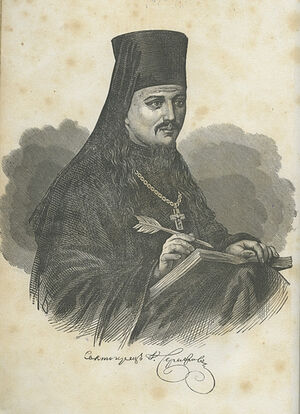 Hieroschemamonk Sergei (Vesnin) In 1850, the book Letters of an Athonite About Holy Mount Athos by Hieroschemamonk Sergei (Vesnin) was published. The book so impressed the youth that the desire to become a monk was born in him. He dropped out of school and decided to dedicate his life to God. Simeon returned home to get his mother’s blessing for it, then he went on pilgrimage to various monasteries to find a monastery that spoke to his heart.
Hieroschemamonk Sergei (Vesnin) In 1850, the book Letters of an Athonite About Holy Mount Athos by Hieroschemamonk Sergei (Vesnin) was published. The book so impressed the youth that the desire to become a monk was born in him. He dropped out of school and decided to dedicate his life to God. Simeon returned home to get his mother’s blessing for it, then he went on pilgrimage to various monasteries to find a monastery that spoke to his heart.
The first stop on his journey was Solovki, but life in the northern monastery turned out to be completely beyond the strength of the young man. After failing to carry out a physically difficult obedience, Simeon had to leave Solovki.
After crossing by sea to Arkhangelsk, he visited several other monasteries. In the St. Nilus of Sora Skete, Simeon met Elder Hieromonk Nilus, who blessed him “to return home and teach children there, seeking salvation in this.” On Fr. Nilus’s advice, Simeon returned to his homeland.
Asceticism
Half a mile from his village, Simeon dug a cave in a mountain and started laboring in asceticism there. At first, he would retire to the cave only for a time. But his brother, castigating Simeon for reading books, praying, and doing almost no work around the homestead, kicked him out of the house, and Simeon retired to his cave as his permanent residence.
He would get up to pray three times during the day and four times at night. He did prostrations, entreating the Lord to increase his faith. He took food in small quantities once a day. On Sundays, he would go to the services in the Fileika church. He tried to accustom himself to complete silence. He spent the majority of his time in his cell, studying passages from the Scripture and the works of the Holy Fathers. He strove to love poverty and destitution.
There was a case when some compassionate people bought him a nice frock, but he immediately went to Vyatka, sold it, and distributed the money to the poor. We have a description of Simeon’s appearance from that time: “A man in a simple aziam (a long caftan worn by peasants—Auth.), with a small beard, thin in appearance, tall.” The townsmen, perplexed and unable to understand his life, nicknamed him Senka the Loon.
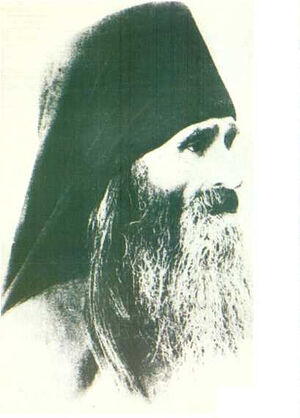 St. Stephan He lived ten years this way, enduring extreme material need and the ridicule of others. Over time, his brother’s heart softened, and Simeon started going to help his brother with the homestead.
St. Stephan He lived ten years this way, enduring extreme material need and the ridicule of others. Over time, his brother’s heart softened, and Simeon started going to help his brother with the homestead.
Soon after, their mother died. She had been the closest person to Simeon, whose love helped him endure difficulties. Simeon could no longer remain in Fileika, where probably everything reminded him of his beloved mother, and he again set off wandering. He spent about six months in the Sarov Hermitage, where he carried out obedience in the trapeza and performed the duties of canonarch, possessed as he was of a pleasant, sonorous tenor.
Then he went to Kiev, where he also didn’t stay for long. His wandering continued, and in the end, Simeon ended up on Mt. Athos. He spent the winter in the cell of the Meeting of the Lord. A note about his stay was later published in the Athonite Soul-Profiting Conversations: “The famous Elder Hieroschemamonk Stephan, now departed for eternity, founder of a men’s monastery with an Athonite typicon near to the city of Vyatka, in Fileika, spent an entire winter in this cell during his stay on Mt. Athos.” Fr. Stephan left a stove he had built himself and some household wares behind in the cell.
It should be noted that Simeon walked to Athos on foot through the Balkans, which were under the rule of the Ottoman Empire in those years. And it wasn’t the most favorable time for travel—between the Crimean War of 1854-1856 and the Russo-Turkish War of 1877-1878.
After his stay on Mt. Athos, Simeon went to the Tauride Governorate to visit his relatives, and he began to earn a living teaching children. A local girl fell in love with him there. Simeon was filled with mutual feelings for her, but he perceived it as a temptation and entreated God to deliver him from marriage. In the end, he left for the sketes in the Crimean Mountains and labored there for two years. He suffered from an incessant fever, and weakened, returned to his homeland in 1862.
Due to illness, Simeon could no longer live in his mud hut, so he built a hut-cell next to it. At the request of an acquaintance, he began to teach children to read and write. As a teacher he enjoyed the peasants’ respect. In the late 1860s, in the chronicle of the Fileika church, the priest wrote: “Simeon Petrov Kurteev deserves special attention for his educational activity and good influence on his fellow peasants.”
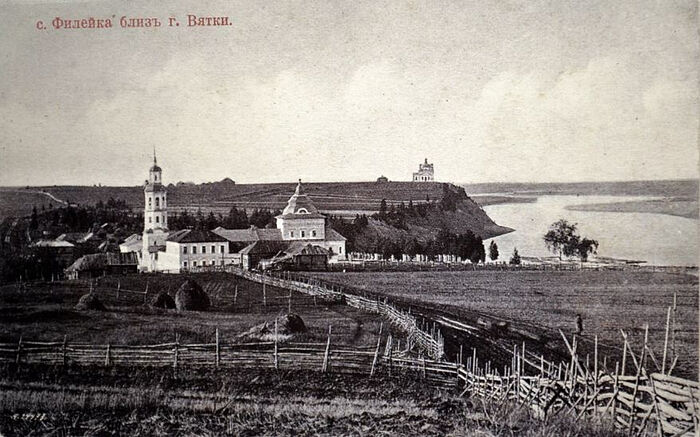 Holy Protection Church in Fileika
Holy Protection Church in Fileika
The first cases of Simeon’s spiritual clairvoyance date from this time. It’s known that he spent the night of April 4, 1866 without sleep, in unceasing prayer: “God, save the Tsar!” A few days later, news came of an unsuccessful attempt on the emperor’s life that same day. Another time, there was a terrible fire in Fileika. Many houses burned down—only the house where Simeon was that night remained untouched by the fire. He walked around the courtyard among the flames with an icon of the Theotokos, chanting the Akathist, and the fire didn’t touch the house.
On the advice of the famous Vyatka missionary Archpriest Stephan Kashmensky, Simeon visited Crimea again and spent some time in the St. George Skete. Having returned home from Crimea, he continued teaching children.
In 1870, Simeon made a pilgrimage to Jerusalem and other holy places in Palestine, after which he again visited Holy Mount Athos.
The life of St. Stephan shows us that at one time, while still a layman, he visited many monasteries, trying to find an experienced spiritual father under whose guidance he could accomplish his salvation. But his spiritual care was fragmentary. Nevertheless, we note that there were several turning points in the life of Simeon that occurred under the guidance of the spiritual fathers of the monasteries where he spent time. The most important turning point was connected with Hieroschemamonk Ieronym (Solomentsov).
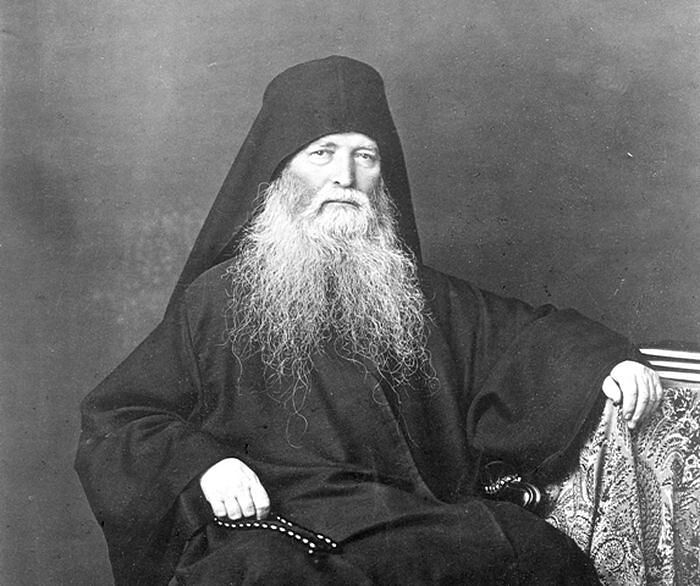 Hieroschemamonk Ieronim (Solomentsov)
Hieroschemamonk Ieronim (Solomentsov)
Fr. Ieronym deserves special attention. Currently, his name is becoming more and more famous among Christians; his works and instructions have been published everywhere. Despite the difficult interethnic situation on Mt. Athos at that time, the name of Fr. Ieronym was revered by the entire multinational Athonite brotherhood. The Elder gathered Russian monks in the Russian St. Panteleimon Monastery, defended their right to independent existence on Athos, and showed them the true path to spiritual prosperity. Through the efforts of Hieroschemamonk Ieronym, the number of monks of St. Panteleimon’s Monastery grew from ten to 800. Elder Ieronym brought up many ascetic monks, including his closest disciple Schema-Archimandrite Makary (Sushkin), Schema-Archimandrite Andrei (Veryovkin), Schema-Archimandrite Niphont (Chetverikov), St. Aristokly (Amvrosiev) of Mt. Athos, the diplomat and philosopher Constantine Leontiev, and many others. And among them was Simeon Kurteev—the future St. Stephan of Fileika.
As for many people of that time, meeting Fr. Ieronym played a key role in Simeon choosing his path in life. It was precisely to him that the Lord revealed His will for Simeon. Fr. Ieronym blessed Simeon to live in the secluded cell of the reposed Hieroschemamonk Sergei (Vsenin), whose letter about the Holy Mountain once changed his life. It should be noted that this was a special blessing from Fr. Ieronym, since he rarely blessed anyone to live in a separate cell. But Simeon couldn’t live on the Holy Mountain for a long time. He turned to the Elder, wanting to know the will of God, and he blessed him to return home and labor there. He gave him money for the road, asking him to return it in the future, thereby foretelling his extensive publishing work. This blessing from Fr. Ieronym was a turning point in Simeon’s life.
To be continued…

